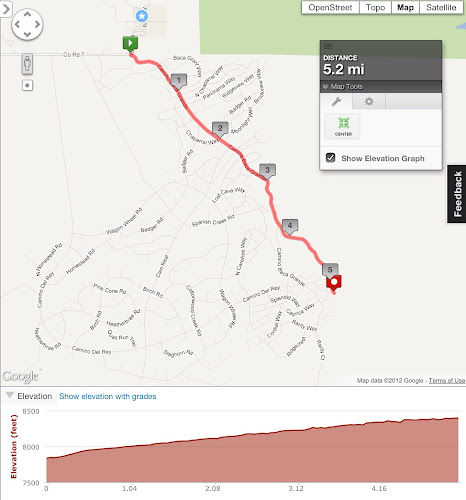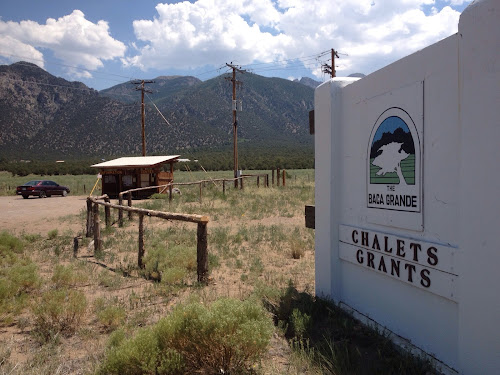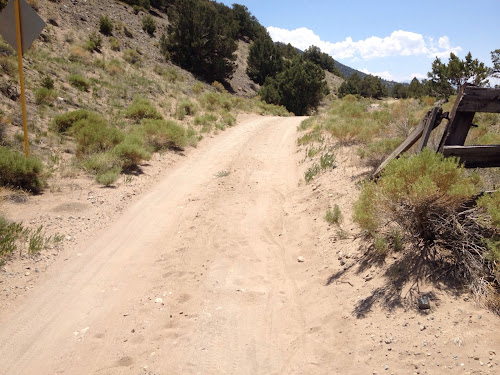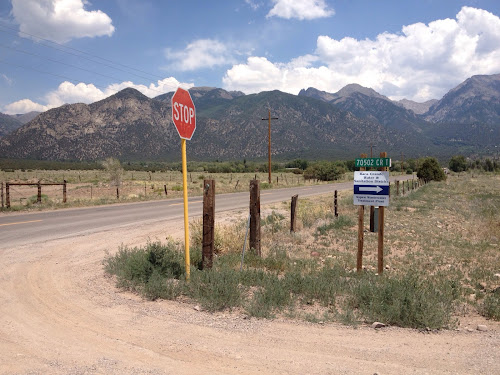This scenic route, a part of the earlier described Loop around the Baca Grande, takes one by some of the spiritual centers Crestone is famous for.
The route begins at the entrance of the Baca Grande, a short distance from the town of Crestone itself.
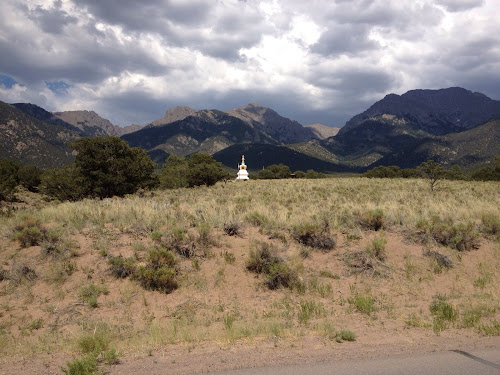
After a mild climb, you pass the Enlightenment Stupa on the 55 acres of Yeshe Rangsal (Self-Cognizant Wakefulness). Climb the driveway to visit the stupa. The view of the valley and the mountains from the stupa as the sun goes down is one of the most beautiful sights I have ever seen. (More information: www.pundarika.org)
Not far from the centers.
Road changes from tarmac to dirt/gravel as we enter the Spiritual Highway proper. The road has no official name on the map so those who live here refer to it as the Spiritual Highway.

Choying Dzong is the retreat center for the Yeshe Khorlo Nyingma Tibetan Buddhist organization.
Next up is Chamma Ling, a Bon retreat center founded by Tenzin Wyangyal Rinpoche. Bon is the indigenous religion of Tibet founded by a Buddha preceding Gautama Buddha. This retreat center has dark retreat cabins where meditation practitioners will remain in complete darkness for up to 40 days. By eliminating the overlay of the visual world, aspects of mind normally hidden reveal themselves to the practitioner.
Proceeding further, The Haidaikhandi Universal Ashram entrance. There is a wonderful little store with spiritual items as well as a beautiful temple. The practitioners seem very welcoming. This is a functioning ashram very much off the grid.
Spanish Creek along the way.
Is that my nose? Next is the Crestone Mountain Zen Center founded by Zentatsu Baker Roshi, the first American roshi.
Shumei, a fantastic center, built by the Japanese. Beautiful architecture, organic farming... A beautiful vision...
The Crestone CenterThe end of line. You can turn back to return to Crestone. Veer left and bike the steep grade to the second large stupa. Turn right to continue on the Loop around the Baca Grande.
is the home of the Shumei International Institute (SII), a newly established non-profit corporation created to promote spiritual growth through interfaith activities, the practice of Natural Agriculture, and the sponsorship of cultural events.
Similar to Shumei’s Kishima Island in Japan, the Crestone Center will serve as a retreat for Shumei’s members. The site also will be an international venue for cultural, environmental, spiritual, and interfaith activities. In addition, symposia focusing on Shumei’s special concern with art*, spirituality*, and the environment* will be hosted at this facility.
